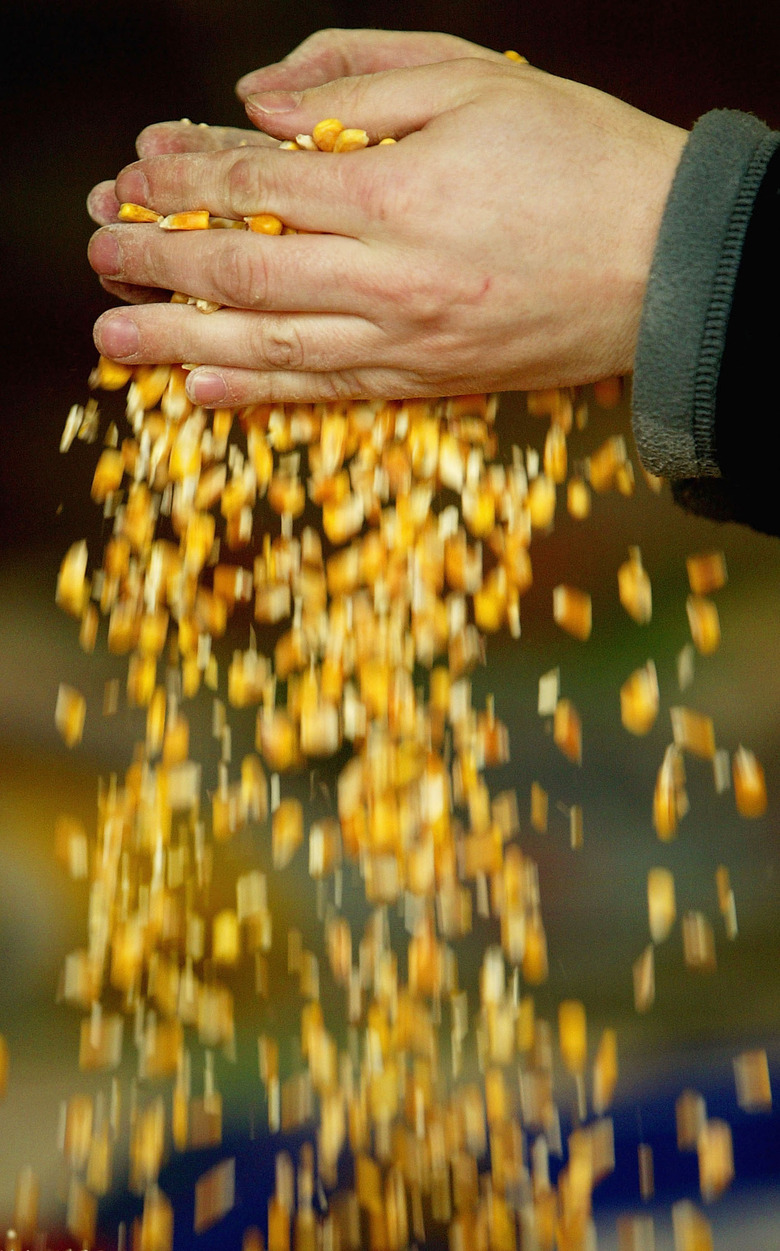What Is The Relationship Between Genetic Engineering And DNA Technology?
There's a very subtle difference between DNA technology and genetic engineering. Genetic engineering refers to those techniques used to modify the genotype of an organism to change its phenotype. That is, genetic engineering manipulates an organism's genes to make it look or act differently. DNA technology refers to the methods used to modify, measure, manipulate and manufacture within the DNA molecule. Because genes are stored in DNA, genetic engineering is done with DNA technology. But DNA technology can be used for more than genetic engineering.
Genes and DNA
Genes and DNA
A gene can be defined as a component of a cell that is responsible for expressing a trait in an organism, and also can pass that trait on to the next generation of an organism. It turns out that genes are segments of DNA that contain a specific pattern of nuclear bases: the four molecules abbreviated A, T, G and C. DNA is made of a long stretch of connected A, T, G and C molecules. For example, a stretch of DNA that goes something like AGCCGTAGTT... and so on for a few thousand bases might mean a cat will have green eyes. But not all DNA is a gene. Some parts of DNA work to provide signals about when and where a gene should become active, and some stretches of DNA have no known purpose.
Genetic Engineering
Genetic Engineering
With genetic engineering, scientists attempt to manipulate the genetic structure of an organism to make a change in the way an organism looks or functions. The genetic structure of an organism is called its genotype, while the physical structures and functions of an organism is called its phenotype. An organism's phenotype is largely determined by its genotype. For example, if scientists changed the genotype of the cat's eye color gene to be TCCCAGAGGT... then maybe they could make the cat have brown eyes instead of green. In reality, the process is far more complex and involves very long stretches of DNA that must be manipulated perfectly, but this is the principle of genetic engineering: Modify the pattern of the bases in an organism's DNA to change its phenotype.
Genetic Engineering Tools
Genetic Engineering Tools
To do genetic engineering, scientists use some of the tools of DNA technology. They haven't used the tools to change a cat's eye color, but they have done some other things. Scientists have modified bacteria to produce insulin for diabetics, have modified corn to be resistant to herbicides for less harmful farming and have modified mice to grow human cancer tumors to test medications. The most common method of genetic engineering is to snip out a piece of DNA from one organism and replace it with a section from another organism. That's called recombinant DNA, and it's done with the help of a couple of different molecules used to cut apart and glue together DNA molecules.
PCR
PCR
DNA technology is used for things besides genetic engineering. For example, when a clump of hair is found at a crime scene, the DNA can be extracted. Because there's not much DNA in the crime scene sample, it needs to be amplified — duplicated many times. The type of DNA technology used for that is called the polymerase chain reaction, or PCR. It involves heating and cooling a DNA sample in the presence of certain chemicals, and it results in enough copies of the crime scene DNA to run tests and find out who was at the scene.
Building With DNA
Building With DNA
Scientists can manipulate DNA in ways far beyond its initial purpose within the body. For example, scientists can use DNA to build a microscopic scaffold, a tiny framework for building up materials atom by atom. They can also use DNA's unique properties to make a molecule that glows — but only when it's attached to another specific target molecule. Scientists are also using DNA for another strange purpose: They're building computer circuits out of it.
Cite This Article
MLA
Gaughan, Richard. "What Is The Relationship Between Genetic Engineering And DNA Technology?" sciencing.com, https://www.sciencing.com/relationship-between-genetic-engineering-dna-technology-3505/. 24 April 2017.
APA
Gaughan, Richard. (2017, April 24). What Is The Relationship Between Genetic Engineering And DNA Technology?. sciencing.com. Retrieved from https://www.sciencing.com/relationship-between-genetic-engineering-dna-technology-3505/
Chicago
Gaughan, Richard. What Is The Relationship Between Genetic Engineering And DNA Technology? last modified August 30, 2022. https://www.sciencing.com/relationship-between-genetic-engineering-dna-technology-3505/
